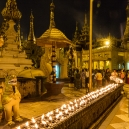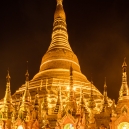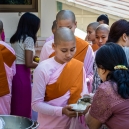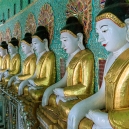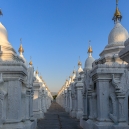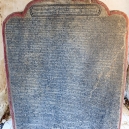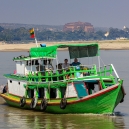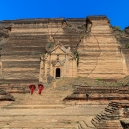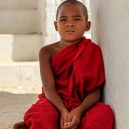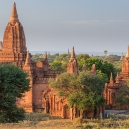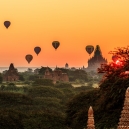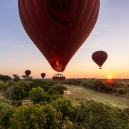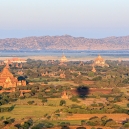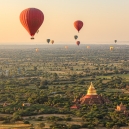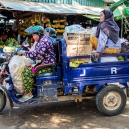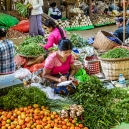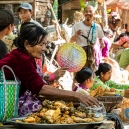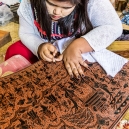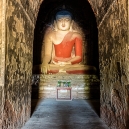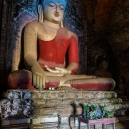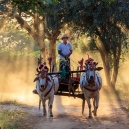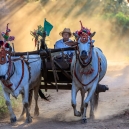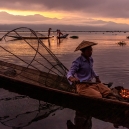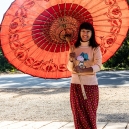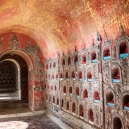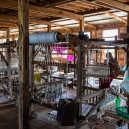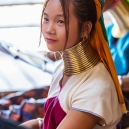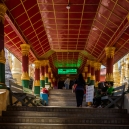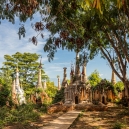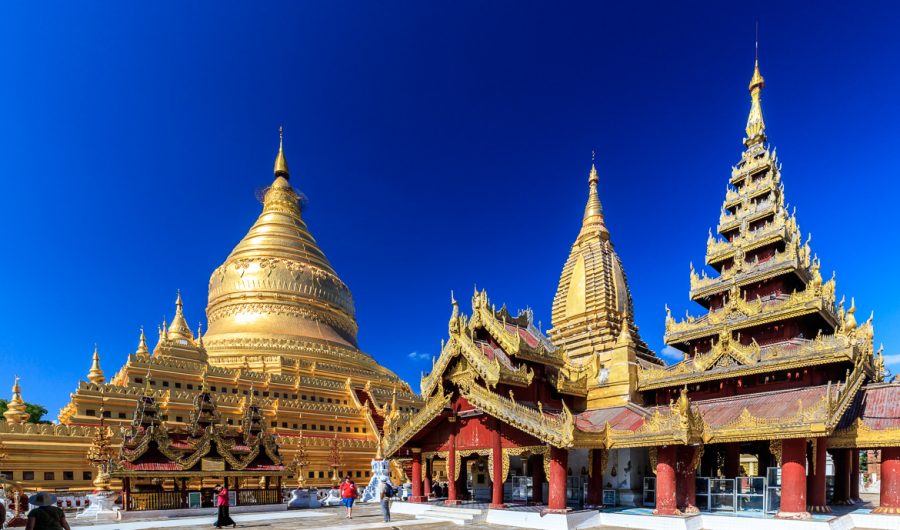
Myanmar is so much. It is overwhelming. And it is different things to different people. To us it was People and Temples. Jennifer and I where there during 10 days in November immediately after our visit to Japan. And it felt very disorganised after the calm and structured Japan.
We were there as part of a photographic tour focusing on a few areas of Myanmar. We didn’t touch on the political aspects, the mismanagement of the military junta that ruled until recently and still dominates much of the country or the ethnic cleansing of the Rohingya Muslims. We focused on the beauty and decay of temples and pagodas and the charm of its people, the overwhelming presence of the monks and some of the indigenous tribes.
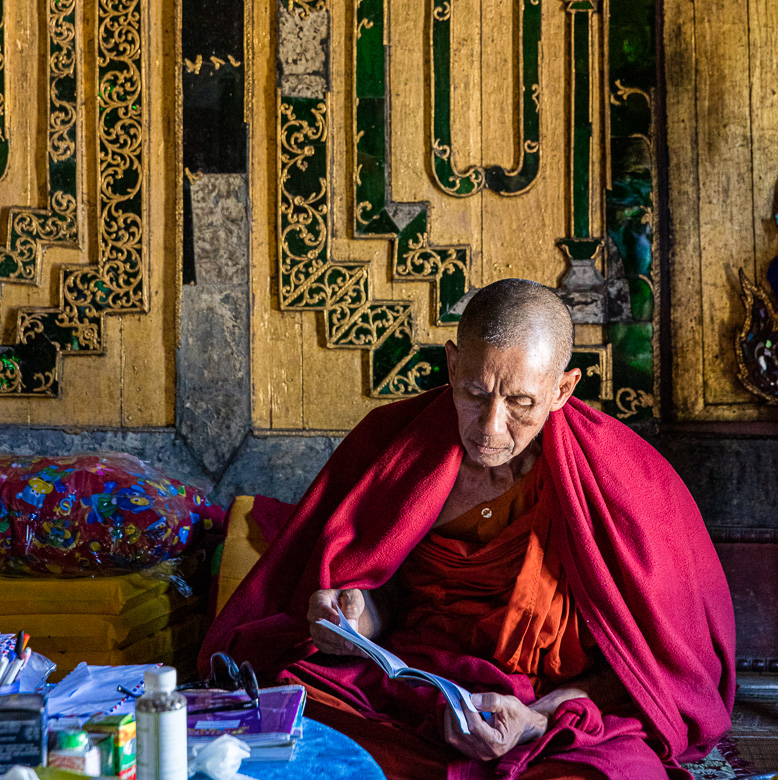
Shwedagon & Mandalay

The Great Stupa of Shwedagon is believed by Myanmar Buddhists to be 2,500 years old (roughly the birth of Buddhism) but more likely dates from somewhere between 500 to 900 A.D. It has been rebuilt and enlarged many times and is surrounded by the Middle Terrace and many other pagodas located on the Middle Terrace.
You approach it from one of four entrance ways leading via halls and stairs lined with stalls to the central Middle Terrace. And from that terrace you can walk around the Golden Stupa. In the evening it became a centre for families walking around the stupa praying, celebrating or just having fun.
Mandalay was our next stop. Mandalay is along the main north-south thoroughfare of Myanmar, the Ayerarwady river, made famous in the West by Rudyard Kipling’s book, The Road to Mandalay. It was the last independent capital of Myanmar before the British took control of Burma.
Mandalay Palace must have been a fascinating sight, but the Japanese occupied it and used in the Second World War and the British bombed it towards the end of the war. Maybe the most famous landmark is U Bein bridge, the largest teak bridge in the world supported by over one thousand piles. The bridge crosses the Taungmyo Lake near Mandalay and is stil much used today, but at sunset it is filled with tourist and locals alike admiring the bridge and watching the sunset.
The Sagaing Hill near Mandalay was the capital of a regional dynasty during the fourteenth century and is now covered in pagodas, monasteries and nunneries Myanmar has at any one time more than 500,000 monks and around 75,000 nuns. We visited the Thetkya Ditar Nunnery at Sagaing and saw them coming together for prayers and a meal. And at the top of Sagaing Hill there is a massive cave temple, Umin Thounzeh, which houses 45 Buddha images arranged in a semi-circular site.
Not far from Mandalay Palace is the Kuthodaw Pagoda, build on Mandalay Hill in 1857. It consists of a large golden stupa surrounded by 729 ancillary pagodas. And each of these pagodas houses one alabaster slab inscribed with one stone page of the holly book Tipitaka. When it was completed it took 2,400 monks 6 months just to recite the Tipitaka. It is said to be the world’s largest book.
We took a boat travelling north on Ayeyarwady River to Mingun to see the stupa that was built along the river in 1790 but never quite finished. Had it been completed it would have been taller than the pyramid of Giza in Egypt. An earthquake in 1839 made the upper parts of the stupa into rubble and left large cracks in the facades (see image).
Not far from this unfinished stupa is the Myatheindan Pagoda (also called the Hsinbyume Pagoda). It is absolutely white and as in all sacred places you have to take off shoes and socks before entering. At midday walking on a white stone pagoda made my soles burn like I was walking on glowing coal. The wavy concentric circles around the stupa represent the seven ranges encircling the sacred peak.
Slide Show: Shwedagon & Mandalay
Click on arrows to change image.
Bagan

At sunrise or sunset all these temples and stupas are an incredible sight and we spent some time photographing them from all angles including from the air in a balloon. That was probably the highlight of our days in Bagan. We departed before sunrise and moved gracefully in the light wind across the plains admiring the enormous mass of temples.
The stupas and temples have been restored by the government – the military junta – but not in a very sympathetic way. UNESCO has refused to give Bagan World Heritage status because of the restoration work, which wasn’t always truthful to the original version of the shrines.
Therefore, they are best admired from a distance and as such must be one of true wonders of this world.
But Bagan wasn’t only the stupas and temples. We went to the colourful Nyaung Oo food market. And as everywhere in Myanmar we saw monks and were able to follow them, when they set off collecting alms (mainly rice and some other food) in the morning. You see a lot of young monks in Myanmar. It is part of a young boy’s initiation into becoming a man that he should spend some time as a monk. It is like confirmation for us, but much more serious and it goes on for maybe a couple of years.
The most important religious site during the Bagan empire was Shwezigon Pagoda originally built during the 11th century. Here the special brand of Burmese Buddhism combining Theravada Buddhism with animist (nat) worship was formed during the heydays of the Bagan empire. It is still very impressive today.
Slide Show: Bagan
Click on arrows to change image.
Inle Lake
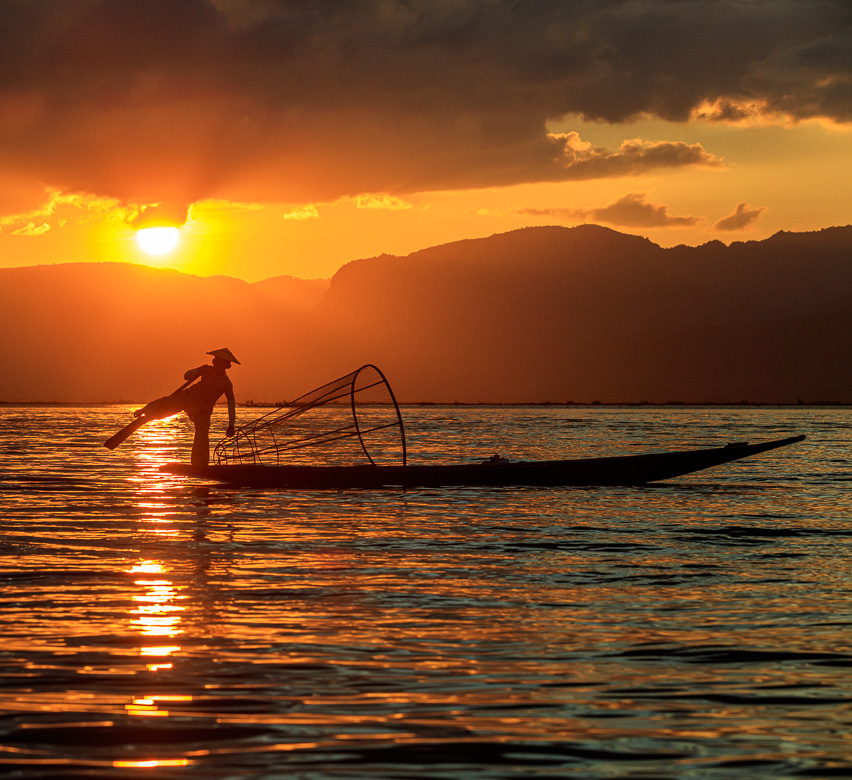
We spent three nights there on a resort at the lakeside, venturing out to see the lake and fishermen and visit temples. Most of the people are from an ethnic minority group called the Intha. They live mostly in houses built on stilts on the lake and they are adapted to a life around the lake. Their special technique of paddling their boats by pushing the oar with one of their feet instead of with their hands is unique for the lake. They live on fishing on the lake as well as looking after their floating gardens and rice paddies along the lake’s shores.
Along the shore is a market that is open most days of the week, but it moves around to different places along the lake. It is called the Nam Pan five-day market. We were also able to visit the workshops built on the typical stilted houses and see a silversmith in action
But there are also other ethnic minority tribes in the area. We met Padaung ladies wearing their special dresses and with necklaces that create a very elongated neck for the ladies. And we visited the Shwe Inthein Pagoda Complex with over 1,000 stupas. Very distinctive as they are much more slender than the stupas we had seen before. And among those stupas I was able to photograph two young girls from another tribe, the Pa O tribe.
Slide Show: Inle Lake
Click on arrows to change image.















